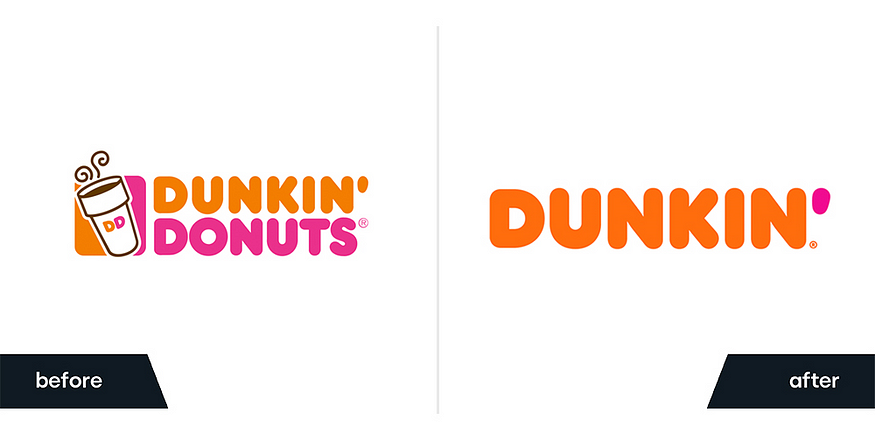The Difference Between Branding and Rebranding


Introduction
In the world of business, the terms “branding” and “rebranding” are often used interchangeably, but they represent two fundamentally different concepts. Understanding these differences is crucial for businesses looking to establish or refresh their market presence.

What is Branding?
Definition: Branding is the process of creating a unique identity for a product, service, or company. It encompasses the creation of a name, logo, design, and overall image that distinguishes a business from its competitors in the eyes of the customer.
Components of Branding:
- Brand Identity: This includes the visual elements like logo, color schemes, typography, and design.
- Brand Voice: The tone and style of communication used in marketing and customer interaction.
- Brand Values: The core principles and values that the brand stands for.
- Brand Promise: The commitment a brand makes to its customers about the quality and experience of its product or service.
Purpose of Branding:
- To establish a strong market presence.
- To create a memorable impression on consumers.
- To build customer loyalty and trust.
- To differentiate from competitors.
You can read more details about branding in this Article Brand Adventure

What is Rebranding?
Definition: Rebranding is the process of changing the corporate image of an organization. It involves updating or completely overhauling the brand identity, which can include the name, logo, design, and messaging.
Components of Rebranding:
- Logo Redesign: Updating the logo to reflect a new direction or aesthetic.
- Name Change: Changing the brand name to better align with the company’s new direction or values.
- Revised Brand Message: Updating the brand’s messaging to reflect changes in the company’s vision, mission, or market positioning.
- Market Positioning: Repositioning the brand to target a new audience or to differentiate from competitors.
Purpose of Rebranding:
- To revitalize a brand that has become outdated or lost relevance.
- To reflect a significant change in the company’s direction, values, or market.
- To recover from a negative image or public relations issue.
- To merge multiple brands after an acquisition or merger.

Key Differences Between Branding and Rebranding
Timing:
- Branding: Typically occurs when a company or product is being launched.
- Rebranding: Happens when an existing brand needs an update or complete transformation.
Objective:
- Branding: To establish a new identity in the market.
- Rebranding: To refresh or change an existing identity to stay relevant or correct a negative perception.
Process:
- Branding: Involves creating brand elements from scratch.
- Rebranding: Involves modifying existing brand elements.
Risk:
- Branding: Less risky as it’s a new market entry.
- Rebranding: Can be riskier as it involves changing an already established perception.
Cost:
- Branding: Costs are associated with initial creation and market introduction.
- Rebranding: Costs can be higher due to the need to update or replace existing materials and possibly retrain employees and re-educate customers.

When is it Time to Rebrand?
Rebranding is a significant decision for any company and should be considered under specific circumstances. Here are some key signs that it might be time to rebrand:
1. Market Evolution
Changing Market Trends: If your market is evolving and your brand feels outdated, it might be time to refresh your image to stay relevant. Technological Advancements: When technological shifts occur, such as the rise of digital platforms, rebranding can help a company adapt and stay competitive.
2. Company Growth and Expansion
Entering New Markets: If you’re expanding into new geographical or demographic markets, rebranding can help better connect with the new audience. Diversifying Offerings: When a company diversifies its product or service offerings, rebranding can help reflect this broader scope.
3. Mergers and Acquisitions
Unifying Brands: After a merger or acquisition, rebranding can unify different brands under a single, cohesive identity.
4. Negative Public Perception
Reputation Management: If your brand has suffered from negative publicity, rebranding can help shed the old image and rebuild trust with your audience.
5. Differentiation from Competitors
Competitive Pressure: If competitors are gaining ground, rebranding can help differentiate your company and highlight unique value propositions.
6. Internal Changes
New Vision and Values: When a company undergoes significant internal changes, such as a shift in mission, vision, or values, rebranding can communicate these changes effectively to the public.
7. Legal Reasons
Trademark Issues: Legal challenges, such as trademark conflicts, can necessitate a rebranding to avoid litigation and confusion.

Case Studies
Branding Example:
Tesla: When Tesla entered the automotive market, it established its brand around innovation, sustainability, and luxury. The brand identity, from its sleek logo to its futuristic vehicle designs, conveyed these values effectively.
Examples of Successful Rebrandinge:
Dunkin’ Donuts: Known for its traditional image centered around donuts and coffee, Dunkin’ Donuts underwent a significant rebranding effort in 2018. The company shortened its name to “Dunkin’” to reflect its broader menu offerings beyond just donuts. This rebranding included a refreshed logo, updated store designs, and a renewed focus on beverages and other food items. The rebranding strategy aimed to modernize the brand, appeal to a wider audience, and emphasize its position as a beverage-led, on-the-go brand. This effort successfully enhanced its market presence and kept the brand relevant in a competitive landscape.

Apple: In the late 1990s, Apple rebranded itself from “Apple Computer, Inc.” to “Apple Inc.” to signify its expansion into consumer electronics beyond just computers. This rebranding helped Apple become a leading innovator in technology and consumer electronics.


Conclusion
Branding and rebranding are essential strategies in a company’s lifecycle, each serving distinct purposes. Branding is about building a new identity, while rebranding is about reshaping an existing one to ensure continued relevance and growth. Understanding the nuances between these processes can help businesses effectively manage their public perception and market presence.

